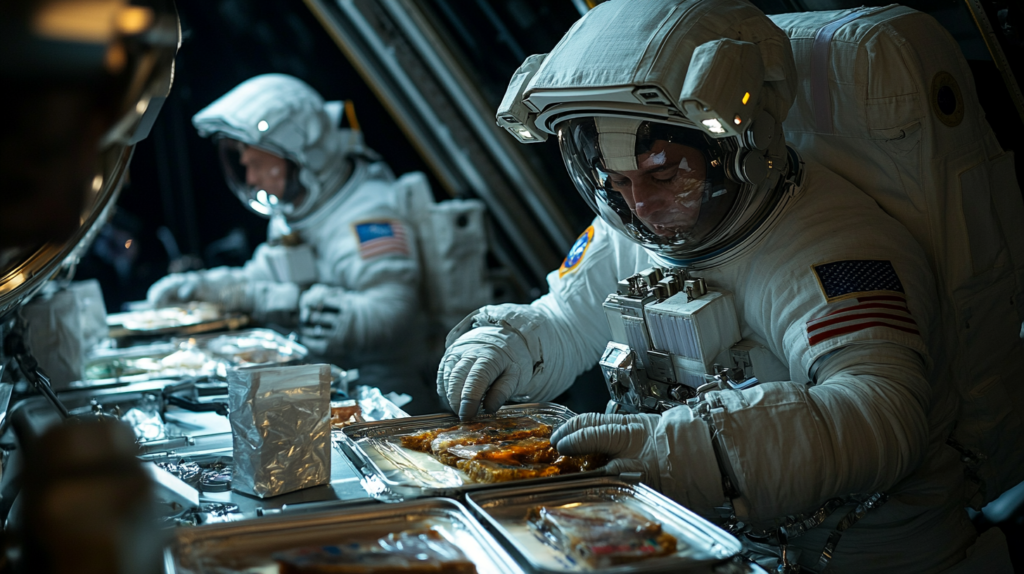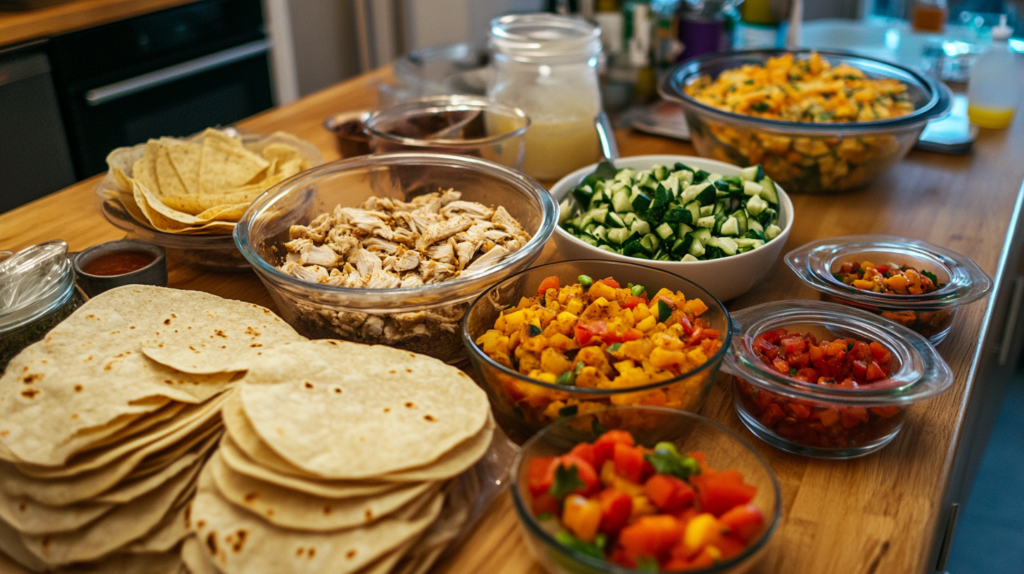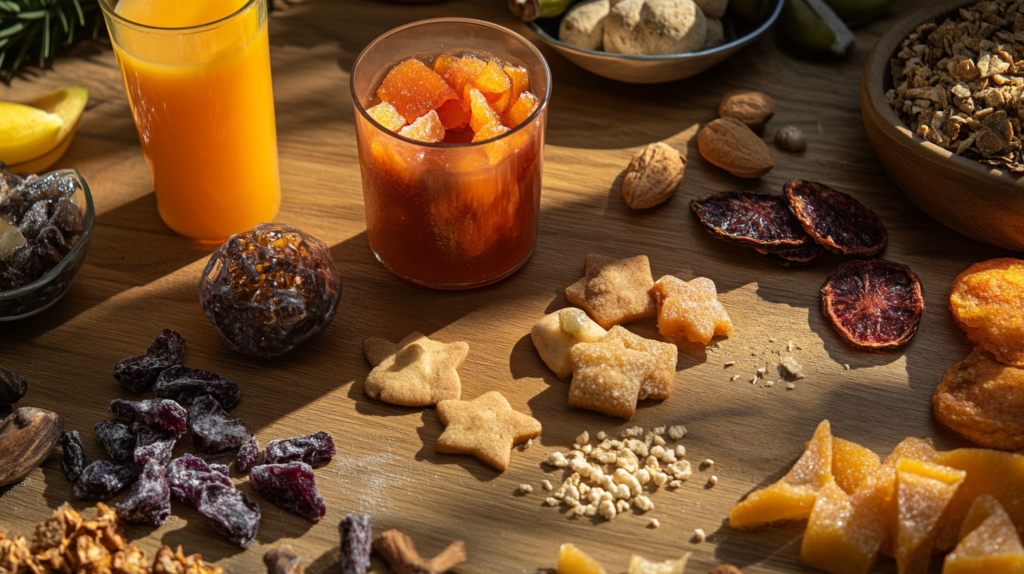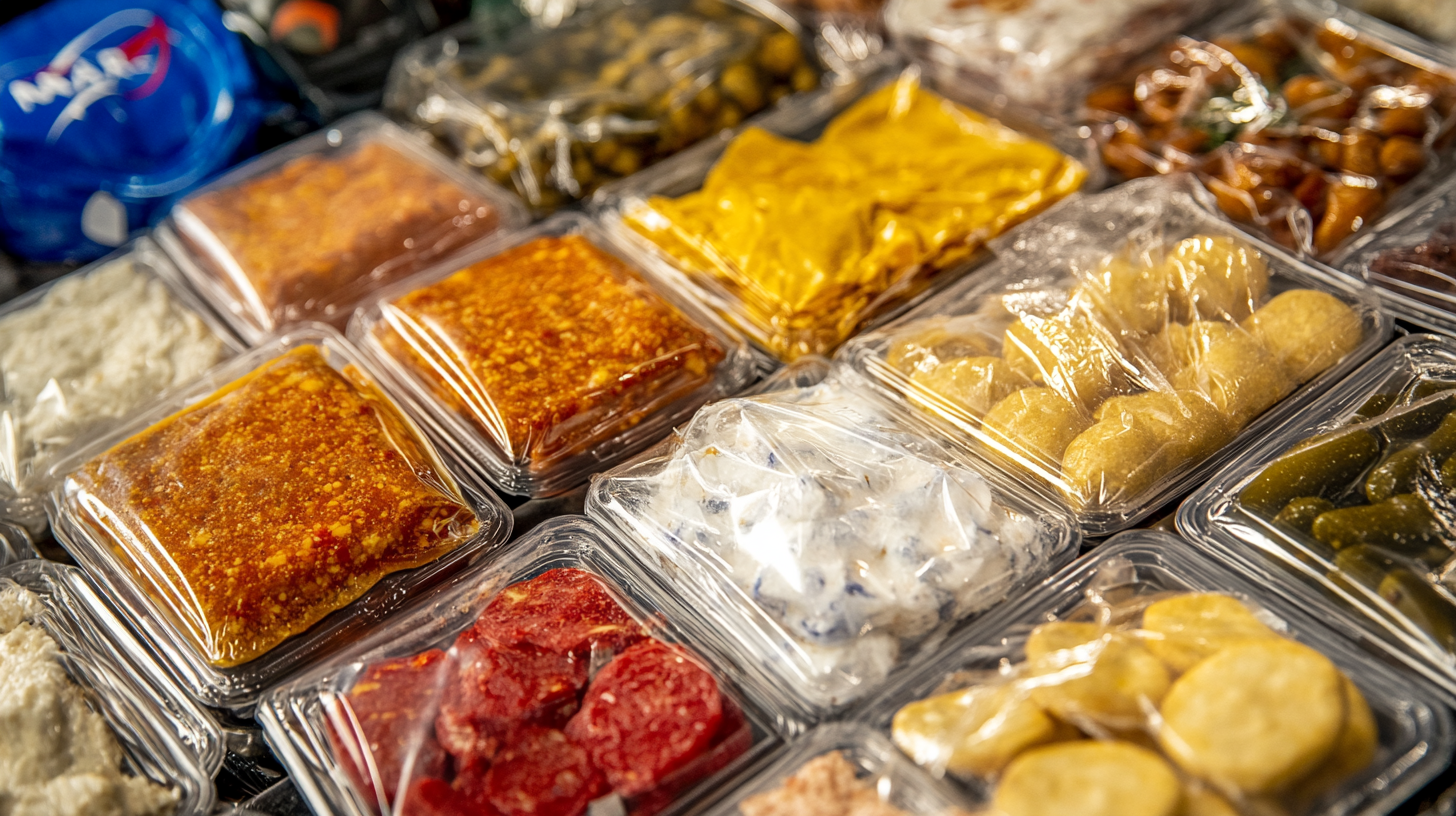Table of Contents
When you think about space travel, images of astronauts floating weightlessly in zero gravity might come to mind. But have you ever stopped to wonder about NASA meal preparation or the fascinating process of crafting space food recipes? NASA’s dedication to innovation extends far beyond rocket science; it also includes developing nutrient-packed, practical, and compact meals that sustain astronauts during long missions in space. These aren’t just meals—they’re a feat of engineering, from freeze-dried meal recipes to carefully balanced astronaut diet plans designed for zero gravity.
In this article, we’re bringing the excitement of DIY astronaut meals to your kitchen! Get ready to learn about the science behind NASA’s food innovations, how to recreate space mission food ideas at home, and even some fun recipes inspired by space-themed cooking. Whether you’re a busy professional, a parent looking for engaging activities, or just curious about creating homemade space snacks, there’s something here for everyone..
1. The Science Behind Space Food: How NASA Perfected Astronaut Diet Plans for Zero Gravity

Creating meals for astronauts involves challenges that go far beyond the concerns of Earthly meal prep. In space, there’s no gravity to keep liquids in their containers or crumbs on the plate. Astronauts must also consume meals that are lightweight, compact, and nutrient-dense to ensure they stay healthy and energized during their missions. This need led NASA to develop groundbreaking technologies and strategies to revolutionize the concept of “food on the go.”
From Tubes to Gourmet: The Evolution of Space Food
In the early days of space travel, meals were far from appealing. During the Mercury missions of the 1960s, astronauts consumed pureed foods from aluminum tubes or bite-sized cubes coated in gelatin to prevent crumbling. While these meals served their purpose, they lacked variety and texture, making mealtime a monotonous experience.
As NASA’s understanding of astronaut needs evolved, so did their food options. By the time of the Apollo missions, freeze-dried meal recipes became a staple. Freeze-drying involved removing moisture from the food, making it lightweight, easy to store, and shelf-stable for years. Astronauts simply added water to rehydrate their meals, turning dry blocks of food into hearty stews, scrambled eggs, or even desserts.
Today, astronauts on the International Space Station (ISS) enjoy a much wider selection of meals. The menu includes over 200 options, from mac and cheese to chicken curry. These meals are carefully designed to provide optimal nutrition while taking up minimal space. The science behind these recipes ensures that every bite counts, packing in calories, vitamins, and minerals to sustain the body in microgravity.
Key Challenges in Astronaut Meal Preparation
- Crumb Control
Crumbs are a major hazard in zero gravity, where even the smallest particles can float into sensitive equipment or astronaut eyes. To address this, NASA developed crumb-free bread alternatives like tortillas and compacted crackers. - Long Shelf Life
Space missions require food that remains edible and safe for months, if not years. This challenge is tackled with advanced preservation techniques such as vacuum-sealing, freeze-drying, and irradiation. - Nutritional Balance
In space, muscle loss and bone density reduction are significant concerns. Astronaut diets are carefully balanced with adequate protein, calcium, and vitamin D to combat these issues. Meals are also low in sodium to avoid dehydration in microgravity. - Taste and Morale
Beyond sustenance, meals in space play a psychological role. Familiar, flavorful dishes can boost morale during long missions. NASA works with professional chefs to ensure the food is as enjoyable as it is functional.
What Can We Learn from NASA’s Astronaut Diet Plan?
While you may not be preparing meals for a zero-gravity environment, NASA’s approach to food offers valuable lessons. Prioritizing nutrient density, minimizing waste, and incorporating efficient storage methods can benefit any kitchen. Plus, some of the freeze-drying techniques used in space meal preparation are now available for home use, making it easier than ever to experiment with DIY astronaut meals.
2. DIY NASA Meal Preparation: Easy Space Food Recipes and Freeze-Dried Meal Ideas
Bringing the wonders of NASA’s space meals into your kitchen might sound like a daunting task, but it’s surprisingly simple. With a bit of creativity and the right techniques, you can recreate the flavors of space food while adapting them for Earthly convenience. Whether you’re looking for quick, on-the-go snacks or experimenting with freeze-dried meals, this section will guide you through making DIY astronaut meals that are both fun and practical.
The Basics of DIY Astronaut Meals
NASA’s approach to space food relies on three main principles: compactness, preservation, and nutrition. To mimic these at home, focus on recipes that are:
- Lightweight and portable, perfect for busy professionals or families on the go.
- Long-lasting, using preservation methods like vacuum-sealing or freeze-drying.
- Nutrient-dense, prioritizing proteins, healthy fats, and vitamins.
Recreating Freeze-Dried Meal Recipes
Freeze-dried foods have become a hallmark of space travel because they’re lightweight, shelf-stable, and easy to prepare. While the actual freeze-drying process involves specialized equipment, you can purchase freeze-dried ingredients (like fruits, vegetables, or meats) from many stores or online retailers. These ingredients can be used to create flavorful dishes that replicate NASA’s meal concepts.
Here’s a freeze-dried recipe you can try at home:

Recipe: Space-Style Chicken and Vegetable Stir-Fry
Ingredients:
- 1 cup freeze-dried chicken pieces
- ½ cup freeze-dried broccoli
- ½ cup freeze-dried carrots
- ½ cup freeze-dried bell peppers
- 1 tablespoon soy sauce
- 1 teaspoon sesame oil
- 1 teaspoon honey
- 1 teaspoon garlic powder
- 1 teaspoon ginger powder
- 1 cup cooked rice (optional for serving)
- 2 cups hot water (for rehydration)
Instructions:
- In a medium bowl, combine the freeze-dried chicken, broccoli, carrots, and bell peppers. Add 2 cups of hot water and let the ingredients rehydrate for 8-10 minutes.
- While the ingredients rehydrate, prepare your stir-fry sauce by mixing soy sauce, sesame oil, honey, garlic powder, and ginger powder in a small bowl.
- Once rehydrated, drain the excess water from the chicken and vegetables.
- Heat a pan over medium heat and add the chicken and vegetables. Cook for 2-3 minutes, stirring occasionally.
- Pour the stir-fry sauce over the mixture and cook for an additional 2-3 minutes until everything is well-coated and heated through.
- Serve on its own or over a bed of cooked rice for a hearty meal.
Quick DIY Astronaut Snack Ideas
For those who don’t have time to prepare full meals, NASA-inspired snacks can offer a taste of space with minimal effort. Here are a few ideas to try:
- Homemade Space Snacks: Mix freeze-dried fruits (like strawberries, blueberries, and bananas) with nuts and chocolate chips for a lightweight trail mix.
- Tortilla Wraps: Use tortillas instead of bread to create compact, crumb-free sandwiches with fillings like peanut butter, honey, or hummus.
- Yogurt Drops: Freeze-dried yogurt bites mimic the texture of astronaut snacks and make for a healthy, mess-free treat.
Adapting Space Mission Food Ideas for Your Family
If you’re a parent or caregiver, turning space food into a family activity can be both educational and fun. Kids love the novelty of space-themed cooking, and it’s a great opportunity to teach them about science and nutrition. Consider hosting a “space dinner” where the whole family gets to prepare and enjoy astronaut-inspired meals.
For example, you can create Zero Gravity Food Recipes like rehydrated soups or compact desserts that are easy to handle. You can even involve kids in rehydrating freeze-dried ingredients, giving them a hands-on experience that mimics what astronauts do aboard the ISS.
Bringing NASA’s innovative meal prep techniques to your kitchen is a practical and enjoyable way to explore the universe without leaving your home. When you’re ready, we’ll move to the final section: From Space Mission Food Ideas to Homemade Space Snacks: Exploring Space-Themed Cooking at Home. Let me know!
3. From Space Mission Food Ideas to Homemade Space Snacks: Exploring Space-Themed Cooking at Home
Space-themed cooking isn’t just about recreating astronaut meals—it’s about bringing the wonder of space exploration into your everyday life. Whether you’re hosting a themed party, teaching kids about the cosmos, or simply trying something new, space-inspired meals offer endless opportunities for creativity. This section dives into fun ways to adapt NASA’s meal preparation techniques and ideas into dishes that are out of this world.
The Joy of Space-Themed Cooking
Cooking space-inspired meals isn’t only about nutrition; it’s about sparking curiosity and imagination. For families, these activities can provide a memorable way to bond while learning about science and the challenges of living in space. For professionals, it’s a creative way to unwind and explore unique culinary ideas.
Adapting Space Mission Food Ideas into your kitchen doesn’t require a degree in astrophysics. With a little ingenuity, you can transform everyday meals into space-themed masterpieces. Think star-shaped cookies, galaxy-colored smoothies, or meals served in compact, astronaut-style portions.
Recipe: Cosmic Galaxy Smoothie Bowl
Ingredients:
- 1 frozen banana
- 1 cup frozen mixed berries (blueberries, raspberries, strawberries)
- ½ cup Greek yogurt
- ½ cup almond milk (or your preferred milk)
- 1 tablespoon honey (optional)
- Edible star-shaped sprinkles or silver food-safe glitter
- 1 teaspoon chia seeds
- Freeze-dried fruits (for garnish)
Instructions:
- In a blender, combine the frozen banana, mixed berries, Greek yogurt, almond milk, and honey (if desired). Blend until smooth.
- Pour the smoothie mixture into a bowl and use a spoon to create a swirl pattern that mimics a galaxy.
- Sprinkle chia seeds over the top to resemble distant stars. Add edible star-shaped sprinkles or a touch of silver glitter for a cosmic effect.
- Garnish with freeze-dried fruits for added texture and visual appeal.
- Serve immediately and enjoy your galaxy-inspired creation!
Homemade Space Snacks for All Ages
If you’re short on time but still want to experience the novelty of space-themed meals, consider whipping up simple Homemade Space Snacks. These treats are designed to mimic the compact, portable foods astronauts consume while being easy to prepare.
- Mini Meteorites (Energy Balls): Combine oats, peanut butter, honey, and cocoa powder in a bowl. Roll into small balls and refrigerate until firm. These make for quick, no-bake snacks perfect for busy days.
- Freeze-Dried Fruit Pops: Use freeze-dried fruits as a topping for popsicles or mix them into yogurt for an extra crunch.
- Space Tacos: Layer tortillas with protein-packed fillings like beans, shredded chicken, or scrambled eggs. Wrap tightly for a crumb-free snack that’s ideal for on-the-go meals.
Transforming Your Kitchen into a Space Laboratory

Take your space-themed cooking a step further by turning your kitchen into a science lab. Here’s how:
- Experiment with Freeze-Dried Foods: Challenge yourself to create meals using only freeze-dried ingredients. This gives you a taste of how astronauts prepare their food in space.
- Simulate Zero Gravity Dining: Serve meals in compact containers and encourage diners to eat with only a spoon—just like astronauts do on the ISS.
- Host a Space Dinner Party: Invite friends or family to a space-themed dinner where every dish is inspired by NASA’s meals. Decorate the table with stars and planets, and serve courses like “Moon Dust Soup” or “Martian Mash.”
Why Space-Themed Cooking is Worth Trying
Cooking inspired by NASA’s food innovations isn’t just entertaining—it’s also practical. The focus on nutrient-dense, portable, and long-lasting meals can help you rethink how you approach meal prep at home. Incorporating Space Mission Food Ideas into your routine is a fun way to reduce waste, experiment with new flavors, and introduce variety to your diet.
Moreover, sharing these meals with others can ignite conversations about science, technology, and the future of space exploration. It’s a way to connect with your family, spark curiosity in children, or even inspire your friends to think about the broader universe.

